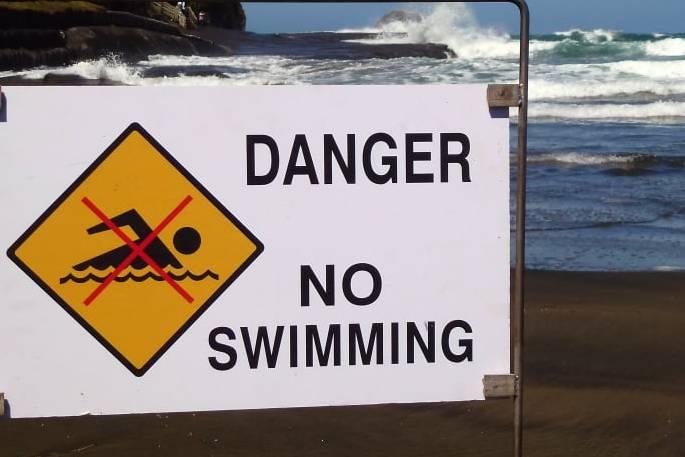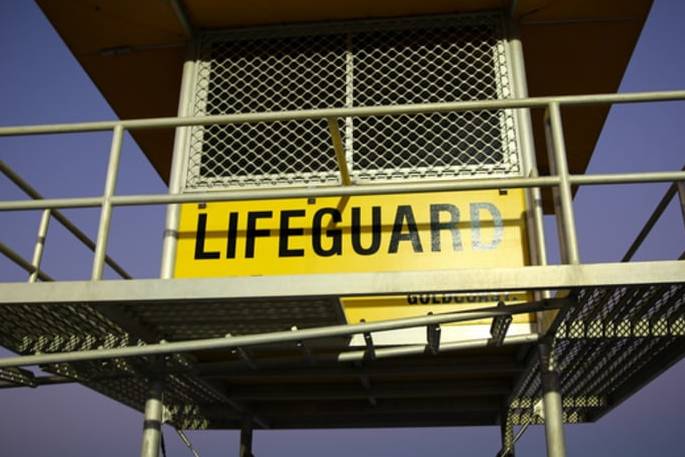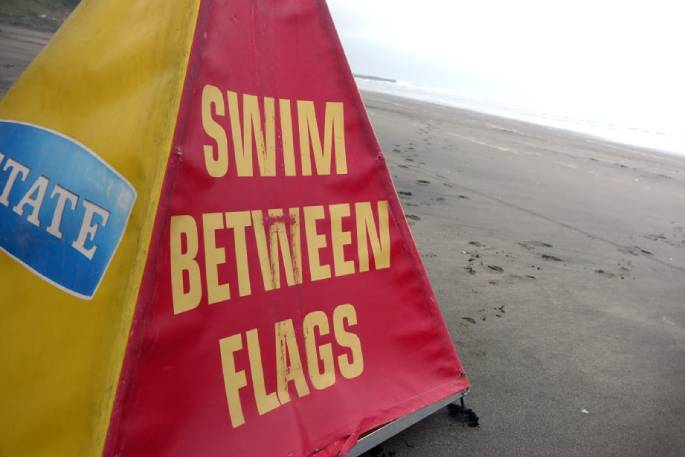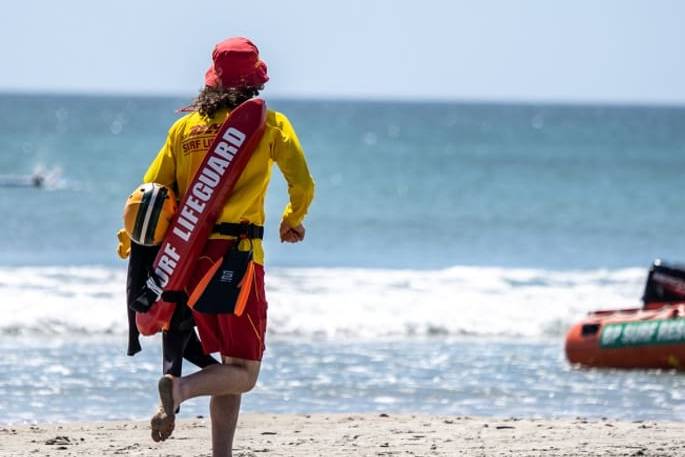Water safety advocates are fearful for this summer's toll on the back of the worst year in a decade for drownings in Aotearoa.
So far this year, 68 people have died in preventable drownings.
Water Safety New Zealand chief executive Daniel Gerrard says this is already 80 per cent of the 10-year average of fatalities.
With tourists set to return this summer for the first time since Covid-19, and two thirds of drownings occurring in summer, there was concern the toll for this year could rise.
Gerrard said after the lockdown period, the number of deaths rose sharply to 90 in 2021 - 10 above the 10-year average.
While the causes were multi-faceted, people were taking more risks, he said.
"We have had numerous fatalities in the underwater and rock-fishing space."
Māori men over represented
Of the 90 fatalities last year, Māori accounted for 28 deaths, and 76 were men.
Gerard says many of these occurred in the Far North in isolated communities difficult to connect with.
Kai gathering is a predominant cause and social issues are contributing, he says.
"People are needing to put food on the table and taking risks and going out in conditions they shouldn't be."
Poorly serviced gear, going out solo, and alcohol were other factors.
"We have to build a collective responsibility but also put it back on people and get them to ask themselves 'is that extra paua exactly what I need? Or maybe I'll wait 'til next time'," says Gerard.
Over the past 10 years, 89 per cent of fatal beach drownings in Aotearoa New Zealand have been male.
Surf Life Saving New Zealand says that's more than 300 people, and enough is enough.
 Swimmers are being urged to pay attention to signs. Photo: RNZ.
Swimmers are being urged to pay attention to signs. Photo: RNZ.Agency support
Water Safety New Zealand is predominantly funded by the Lottery Grants Board, Sport NZ and ACC to the tune of $4 milllion.
"It is always a challenge. It is a difficult equation to make a big impact to so many groups with such a small pot of cash," says Gerard.
Front-line services do amazing work but it's being done at the bottom of the cliff, he says.
"More support needs to go into preventative measures such as education, our youngsters need to be exposed to specific environments."
There had been very little investment in the prevention space, he says.
With tourists set to return this summer, it's imperative to address water safety, he says.
"We have got to get some clear messages out to them."
 Surf Life Saving New Zealand is urging beachgoers to choose a beach where there are lifeguards and to swim between the flags. (file photo) Photo: RNZ / Alexander Robertson.
Surf Life Saving New Zealand is urging beachgoers to choose a beach where there are lifeguards and to swim between the flags. (file photo) Photo: RNZ / Alexander Robertson.Solutions
Auckland Council regional parks manager Scott De Silva says council had installed safety signage based on recommendations from experts.
These utilise symbols to notify of risks.
"With over 200 languages spoken in Auckland, internationally known and tested symbols have been recommended by water safety experts."
Signage has been placed at higher risk locations including the west coast of Tāmaki Makaurau.
"We continue to encourage people to do their research before shore and rock fishing including; wear life jackets, fish to the conditions and do not undertake risky behaviour," says De Silva.
Council worked with and supported several organisations, such as Surf Lifesaving Northern Region and Drowning Prevention Auckland, to promote safe swimming, he says.
"There are learn to swim programmes run through our facilities and specific programmes such as the West Coast Rock Fishing Safety Project which includes the provision of Angel Rings, across Auckland's west coast.
"Angel Rings and PRE [public rescue equipment] is also installed at other regional parks such as Waitākere Ranges, Wenderholm and Hunua Falls."
 Auckland Council worked with several organisations, such as Surf Lifesaving Northern Region and Drowning Prevention Auckland, to promote safe swimming. (file photo) Photo: RNZ / Rebekah Parsons-King.
Auckland Council worked with several organisations, such as Surf Lifesaving Northern Region and Drowning Prevention Auckland, to promote safe swimming. (file photo) Photo: RNZ / Rebekah Parsons-King.Safeswim principal Holly Foreman says their website allows users to access real-time information on the water quality and swimming conditions of various beaches across Auckland.
"The benefits of checking before heading out mean users can make an informed decision on whether it's currently safe to swim at a specific beach or if it would be better to head elsewhere."
Gerard says sign placement is also crucial.
"If someone's climbed over the rocks to go fishing and there is a sign there, research shows that has no impact at all, it's where you place the sign, maybe where they buy bait, but we need to have consistent messages."
Ultimately, it's all about thinking before jumping in, he says.
"Don't be afraid to go up and say 'hey, mate, maybe it's not the best time to go in right now'."
Swimming season arrives
Surf lifeguards are rolling out volunteer beach patrols this Labour weekend.
Labour Weekend is the traditional start to the patrol season for most areas of the North Island, across Auckland and the beaches in Northland, Waikato, Coromandel and the Bay of Plenty.
Surf Life Saving New Zealand is urging beachgoers to choose a beach where there are lifeguards and to swim between the flags.
 With tourists set to return this summer, it is imperative to address water safety, says Water Safety New Zealand. (file photo) Photo: RNZ / Kim Baker Wilson.
With tourists set to return this summer, it is imperative to address water safety, says Water Safety New Zealand. (file photo) Photo: RNZ / Kim Baker Wilson.Chief executive Paul Dalton says NIWA is predicting a strong marine heatwave summer, so they in turn were expecting another busy season.
"Last year, our patrols rescued 726 people, and despite a record number of drownings across the country, there were zero drownings between our red and yellow flags."
Too often men underestimated the conditions and overestimate their ability, Dalton says.
"This 'she'll be right' attitude gets too many men into trouble in the water, often with fatal consequences."
In the past 10 years, there have been 357 beach and coastal fatal drownings in New Zealand.
"Each fatality leaves whānau and communities devastated. Our drowning toll is something every New Zealander should see as a national tragedy and one we all have a responsibility to address."
Safety Tips:
- Choose a lifeguarded beach and swim between the red and yellow flags.
- Watch out for rip currents.
- If caught in a rip, remember the 3R's: Relax and float, Raise your hand and Ride the rip.
- Read and understand the safety signs.
- Ask a surf lifeguard for advice as beach conditions can change regularly.
- Know your limits.
- Always keep a very close eye on young children in or near the water.
- Keep children within arm's reach at all times.
- Get a friend to swim, surf or fish with you.
- When rock fishing, always wear a lifejacket and shoes with grip.
- If in doubt, stay out!
- If you see someone in trouble in the water, call 111.



1 comment
There was a time...
Posted on 26-10-2022 12:36 | By morepork
... when kids were taught water skills and swimming in the school pool, which was open to the public on weekends. Then the Government refused to help schools fund the upkeep of their pools, and so pools were closed or removed and water skills dropped off the curricula. You are seeing the results.
Leave a Comment
You must be logged in to make a comment.